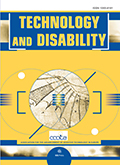Authors: Ma-thi, Chau | Truong-duc, Toan | Ngo, Thi-Duyen | Le-thanh, Ha
Article Type:
Research Article
Abstract:
According to Dr. Margaret Chan [29 ], approximately 15% of the world’s population faces significant challenges in life due to severe disabilities. The majority of these individuals have mobility impairments, significantly impacting their mobility and self-care abilities. Two main groups affected by these disabilities are individuals with Amyotrophic Lateral Sclerosis (ALS) and those who have had a stroke. In a study referenced as [28 ], it was revealed that ALS accounts for 80% of cases involving severe mobility impairments. The incidence rates of ALS and stroke are reported to be 4/100,000 people and 600/100,000–1,000/100,000 people, respectively. In Vietnam, the ALS
…incidence rate is approximately 2–3 cases per 100,000 people, while over 200,000 individuals suffer from strokes each year. Roughly 25–30% of individuals with mobility impairments are at risk of experiencing communication difficulties, which can manifest as speech difficulties, slurred speech, or aphasia [20 ]. In addition to limited mobility and communication challenges, interacting with the living environment poses a significant obstacle for these individuals. Therefore, in addition to assistive communication systems, it is crucial to develop an effective and user-friendly control system for home IoT devices which enable people with severe mobility impairments to gain greater independence in their daily lives. This study presents the development and testing of an assistive IoT smart control system that allows individuals with severe mobility impairments to control familiar electronic devices using their eyes and brain. The test results demonstrate the realistic and feasible nature of the proposed system. Users rated the system above 2.78 out of 5.00 according to the HMI questionnaire. The score for attitudes, which reflects users’ trust in the system, was 3.76 out of 5.00. Therefore, the proposed approach holds promise in assisting individuals with severe mobility disabilities to effectively interact with the IoT devices in their surroundings.
Show more
Keywords: Smart assistive product, assistive communication, smart IOT control
DOI: 10.3233/TAD-240001
Citation: Technology and Disability,
vol. Pre-press, no. Pre-press, pp. 1-14, 2024
Price: EUR 27.50




